[vc_row padding_top=”0px” padding_bottom=”0px”][vc_column fade_animation_offset=”45px” width=”1/1″][text_output]
Cacao, the history behind of the “food of Gods”
The origin of cocoa, the first tree founded, has been a source of pointless discussions among countries that dispute the honour of being the first where this seed appeared on the planet. We could refer to, for instance, a recent study carried out at the University of Pennsylvania, which holds that cocoa comes from Honduras, leaving aside the theory of its origin in Mexico or Ecuador. Such researches presented in 2007 were based on chemical analysis of remains extracted from pottery vessels found in the lower Ulua Valley in “Puerto Escondido”, a Honduran archaeological site. According to the report “Chemical and archaeological evidence of the earliest cacao beverages” The chocolaty liquid found in the vessel had been prepared between 1400-1000 BC, about 500 years earlier than what was previously documented.
On the other hand, researches carried out to mitochondrial DNA of Criollo cocoa (or fine aroma) revealed that its appearance was in Venezuela, specifically in South Lake region formed by Zulia, Merida, Trujillo and Táchira.
In this way, the researchers Humberto Reyes and Liliana Capriles de Reyes claim this in their book “Cacao in Venezuela” (2000), when they express that although “without any doubt and, based on the theory of the origin of cocoa, as from north-western Venezuela should be where the first wild plants of this fruit were found. The cultivation of these cocoa plants should have been in the southern part of the Maracaibo Lake, before the arrival of the Spaniards. “Additionally, they point out that during that time the indigenes communities “timotes” in Merida and “cuicas” in Trujillo, prepared beverages named “chorote” based on the cocoa bean.
Meanwhile the Venezuelan Chamber of Cocoa (Capec) mentions that “the first data on cocoa in Venezuela date back to the late 1600s, when listed as a product produced in Merida and exported to Spain. Such a cultivation spread to the shores of Aragua, Sucre and Barlovento “. Likewise, they detail that during the period 1701 – 1703, the export volumes ranged from 600 tons / year to about 2,230 tons / year.
In both theories we could conclude that the origins of cocoa in Venezuela are linked to indigenes culture, exactly as happened in Mexico or Ecuador, being influenced by Europeans after their arrival to the country. These in turn, discovered the potential of the precious seed, introducing it in their farms and plantations for its subsequent use in trade through exports.
As time passed there occurred important facts, such as the implementation in 1729 of the Guipuzcoana Company of Caracas, a leading company specialised in international trade of cocoa, privilege granted by the Spanish Crown and excluded by its dissolution in 1785. In 1799, Alexander von Humboldt began his early research on cocoa, who found a wild plant in the area of Casiquiare.
According to CAPEC, in mid-1800 there is stagnation in cocoa production with an average of 5,000 ton/year, when coffee replaces it as the largest income generator, figure that was again increased between 1900 and 1920 when cocoa volumes reached 22,000 tons / year.
Each and every one of the previously mentioned historical events arose during the time when the first oil wells had not been exploited yet. A period when products like cocoa, coffee and sugar cane attained interesting export figures and they were praised as the best valued agricultural treasures in the country. Today the task is to reconcile us back to our roots, to our land that has given us so many harvests and prosperity. It is time to “truly sow the oil” through education and sense of belonging that could be created by our cocoa, the best in the world.
By Joselina Rodriguez
[/text_output][/vc_column][/vc_row]





